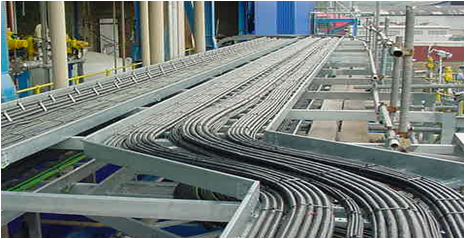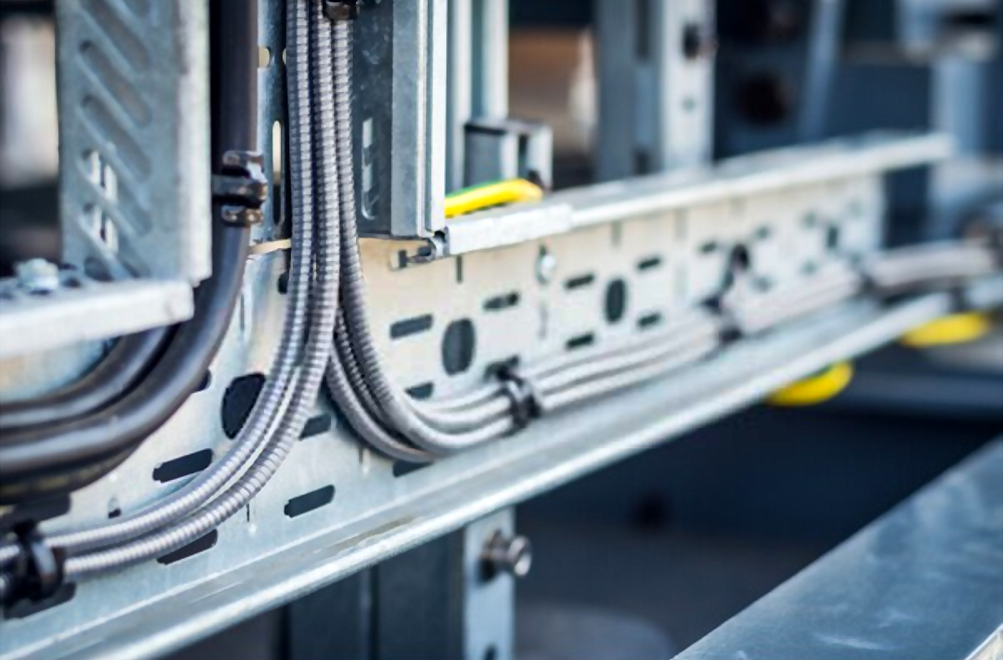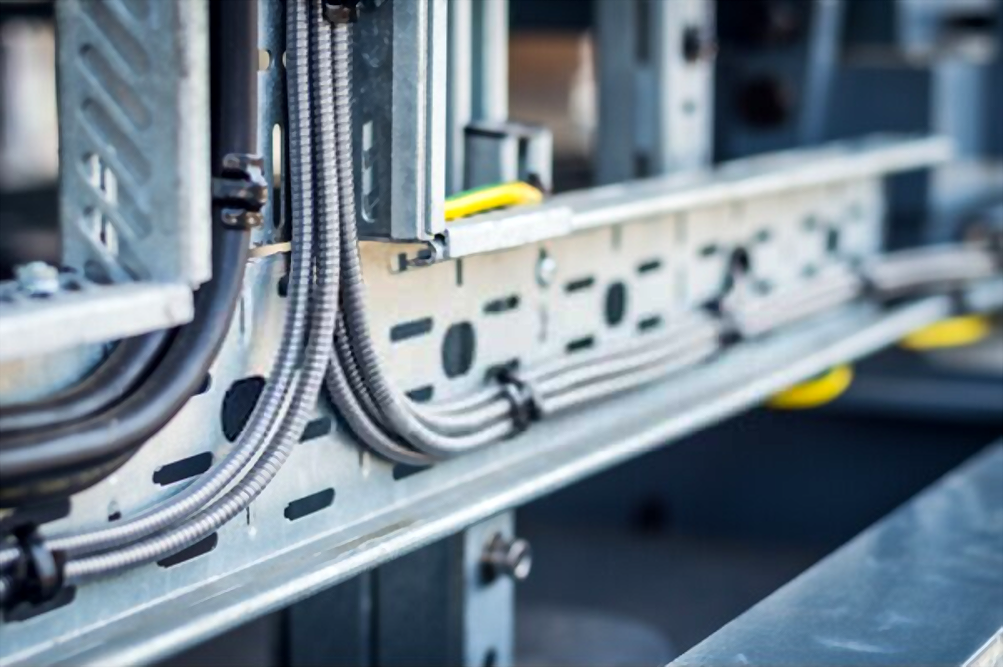Global Cable Tray Production Capacity, Demand& The Future
The global cable tray market is forecast to grow at a CAGR of 5.57% during the period 2019-2024. The report offers an up-to-date analysis of the current market scenario, the latest trends and drivers, and the overall market environment. This press release features multimedia. Cable trays are used to support and route cables in industrial and commercial applications. They offer an alternative to open wiring or electrical conduit systems, and are used when cables are required to be supported in areas where open wiring or conduit is not suitable.

Introduction
The global cable tray market is expected to reach USD 8.1 million by 2025, growing at a CAGR of 5.61% during the forecast period. A cable tray is a system used to support insulated electrical cables used for power distribution and communication purposes. It is an alternative to open wiring or electrical conduit systems and is commonly used in commercial and industrial construction.
Cable trays are manufactured from a variety of materials, including aluminium, steel, fibreglass, and PVC. They are available in a variety of shapes and sizes and can be configured to meet the specific needs of the application. Cable trays are classified into several types, such as ladder-type, perforated type, trough type, solid bottom type, and ventilated type.
The rising demand for efficient power distribution in commercial and industrial applications is the key factor driving the growth of the global cable tray market. The growing adoption of renewable energy sources is another factor fueling the market growth. The increasing construction activities in developing countries are also contributing to the market growth.
However, the high cost of raw materials and installation is restraining the growth of the global cable tray market. The stringent regulations regarding fire safety are also hampering market growth.
Market Segmentation
The global cable tray market is segmented on the basis of product type, material type, end-use industry, and geography. On the basis of product type, the market is divided into ladder type, perforated type, ventilated type, solid bottom type, and others. On the basis of material type, the market is classified into stainless steel, aluminium, mild steel, and fibreglass. The end-user industries for cable trays include oil & gas, power generation & distribution, construction & infrastructure, mining & metals, chemicals & petrochemicals, food & beverages, and others.
On the basis of geography, the global cable tray market is classified into North America (the U.S., Mexico, and Canada), Europe (Germany, France, Italy, Spain, U.K., Russia, and the Rest of Europe), Asia-Pacific (China, Japan, India, South Korea Australia & New Zealand and Rest of Asia-Pacific), Middle East & Africa (GCC Countries Turkey Iran Israel South Africa and Rest of MEA) and South America (Brazil Argentina Columbia).
Market Overview
The global cable tray market is estimated to be valued at USD 6.4 billion in 2020 and is expected to reach USD 8.1 billion by 2025, at a CAGR of 4.6%. The market is primarily driven by the growing demand for efficient power distribution systems in commercial and industrial applications. Cable trays are used in a variety of applications, including power generation, transmission & distribution, oil & gas, mining, marine, and others.
The Asia-Pacific region is the largest market for cable trays, followed by North America and Europe. The Asia-Pacific region is also the fastest-growing market for cable trays, due to the rapid industrialization and urbanization in the region. China is the largest market for cable trays in the Asia-Pacific region, followed by India and Japan.
The major players operating in the global cable tray market include ABB Ltd., Eaton Corporation PLC, General Electric Company, Legrand SA, Panduit Corp., Schneider Electric SE, Siemens AG, Thomasson Company Inc., and Wabash National Corporation.
Competition Landscape
The global cable tray market is highly competitive with several large and small players operating in the market. The key players in the market are focusing on expanding their geographical reach to gain a larger share of the market. The leading players in the market are also investing in research and development to introduce innovative products in the market.
Porter’s Five Forces Analysis
In today’s business world, Porter’s Five Forces Analysis is an essential tool for helping organizations to remain competitive. This framework can be used to evaluate an industry and make decisions about how to position a company within that industry. The five forces are supplier power, customer power, new entrants, substitutes, and rivalry.
When it comes to the global cable tray market, supplier power is moderate. There are a number of suppliers who provide cable trays and related products, but no one supplier has a dominant market share. This gives buyers some negotiating power when it comes to price.
Customer power is also moderate in this market. While there are some large customers who could exert significant influence over prices, the cable tray market is not particularly concentrated. This means that there are many small and medium-sized customers who collectively have significant buying power.
New entrants into the global cable tray market face significant barriers to entry. This includes the high cost of setting up manufacturing facilities as well as the need to develop relationships with key customers and suppliers. Additionally, new entrants will need to differentiate their products in order to compete against established players in the market.
There are a number of substitutes for cable trays including conduit systems and surface
Market Opportunities and Challenges
The global cable tray market is expected to reach USD 7.85 billion by 2025, according to a new report by Grand View Research, Inc. The market is anticipated to witness a CAGR of 5.2% over the forecast period. Increasing infrastructure development and construction activities are expected to drive the growth of the market.
In addition, the growing demand for energy-efficient and safe electrical systems is also expected to fuel the growth of the market. However, fluctuations in raw material prices and stringent government regulations are some of the major challenges faced by market players.
The report provides an extensive competitive landscape of the leading companies operating in the global cable tray market. Some of the key players include Legrand SA, Schneider Electric SE, Eaton Corporation Plc, Anixter International Inc., and ABB Ltd.
Market Trends
The global cable tray market is growing at a rapid pace due to the increasing demand for energy-efficient and sustainable buildings. The market is also driven by the growing construction industry, especially in Asia-Pacific and the Middle East. The key players in the market are focusing on product innovation and expansion of their distribution networks to gain a competitive edge.
Vendor Landscape
The global cable tray market is highly competitive with a large number of vendors operating in the market. The vendors in the market compete on the basis of price, quality, innovation, and service. In order to survive and succeed in this competitive environment, it is important for the vendors to differentiate their products and services.
The major players in the global cable tray market are Legrand, Schneider Electric, Panduit, nVent, and Hubbell. These companies account for a major share of the market. Other notable players in the market include Anixter, CADDY, Eaton, HellermannTyton, Wiremold and Emerald Cable Trays UAE.
Conclusion
The report has been prepared based on an in-depth market analysis with inputs from industry experts. The report covers the market landscape and its growth prospects over the coming years. The report also includes a discussion of the key vendors operating in this market.



